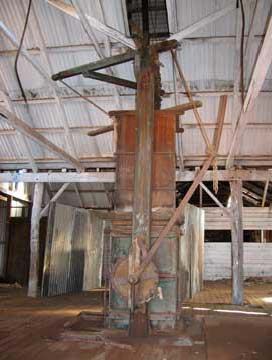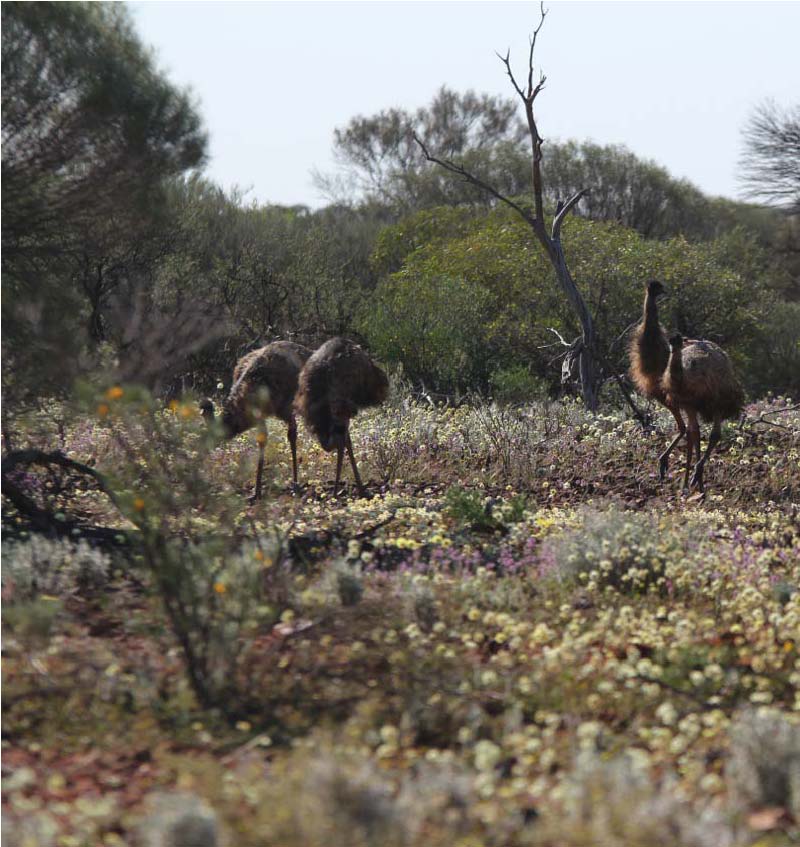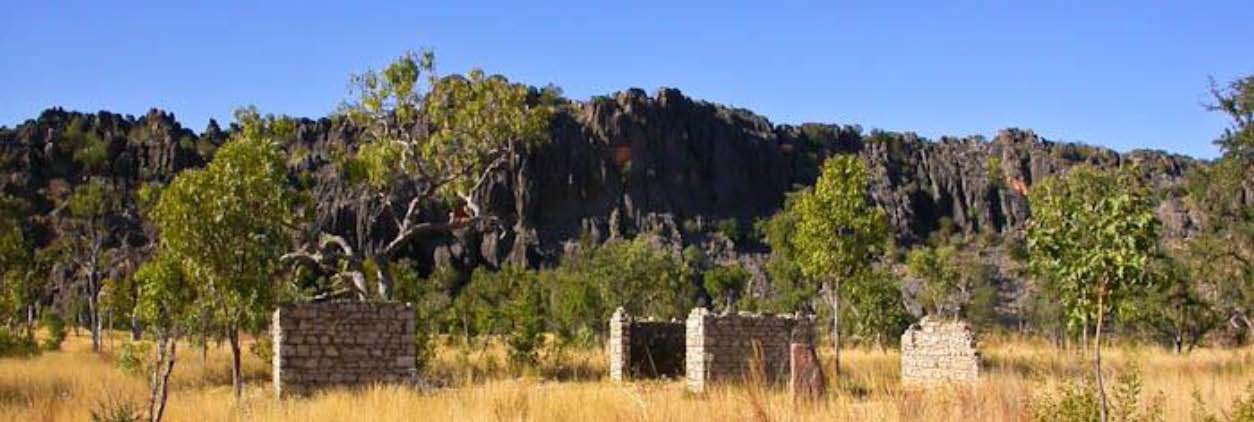
Barnong Station

The Barnong Station Homestead has historic significance for its role
in the development of the pastoral industry in the Yalgoo district.
It has further historic significance for its association with
pioneers Michael Morrissey and Charles Morrissey. The place has aesthetic value with use of local stone unifying the structures and
the warm colour and texture of the stone creating visual interest.
A number of smaller leases, which later became known as Barnong, were taken up in the early 1870s. Names associated with these leases included Waldeck, Maley and Robert Bell. By 1888 a number of these leases were registered to either C. Crowthers or C.J. Wainwright.
From 1872 Michael Morrissey had commenced acquiring various
small leases combining them into one property. In 1898 Charles Mitchell purchased several blocks and, over several years, added to this holding.
Barnong Woolshed
Constructed from late 1890s and trading as Barnong Station, Mitchell used the old Gullewa Homestead as the centre, as it remains today
The original house and kitchen building was built by Michael Morrissey. Barnong Station includes the old mining centres of Gullewa, Mugga Mugga, Cagacaroon and Ederga as well as the former Wurarga railway siding and hotel
The Barnong Station Homestead Complex consists of the main house, the kitchen and dining rooms, meat house, old staff quarters, shearing shed, workers' and shearers' quarters.
The house has been built in two sections with the stone for the newer part having been quarried less than a kilometre away. The original house has two rooms, a dining room and an office, which has pug walls. The exterior walls have a concrete render to sill height, this being a measure to curb the damp problems.
The kitchen/dining building, which also included the cook's bedroom, pantry, and store to the south side, is of stone construction with a pitched roof and lean-to roof covering the rear section. It has recessed windows and doors with timber sills and lintels. The dining room features french doors and timber plank ceilings. The store has timber floors and no ceiling. The building shows signs of erosion.

The verandahs feature slab stone floors and both steel and rough gimlet verandah posts. A newer addition has been constructed to the west elevation.
Immediately east of the kitchen building is the meat house, laundry block and staff quarters. This stone building has a gable roof clad with corrugated iron and side lean-to roofs. All openings are recessed with timber lintels and sills.
The homestead and garden, which includes an old pepper tree growing over a spring, is enclosed by a fence. The shearing shed and quarters, dating from the 1920s or later, are timber framed and clad with corrugated iron. One section has weatherboard cladding.
Surrounding the shearing shed are substantial stock yards. The outbuildings consist of quarters, a cook's/maid's room, the contractor's room and shearers' quarters. They are small, simple buildings of rectangular plan with gable roofs and no adornment.
Ruins of Barnong Homestead 